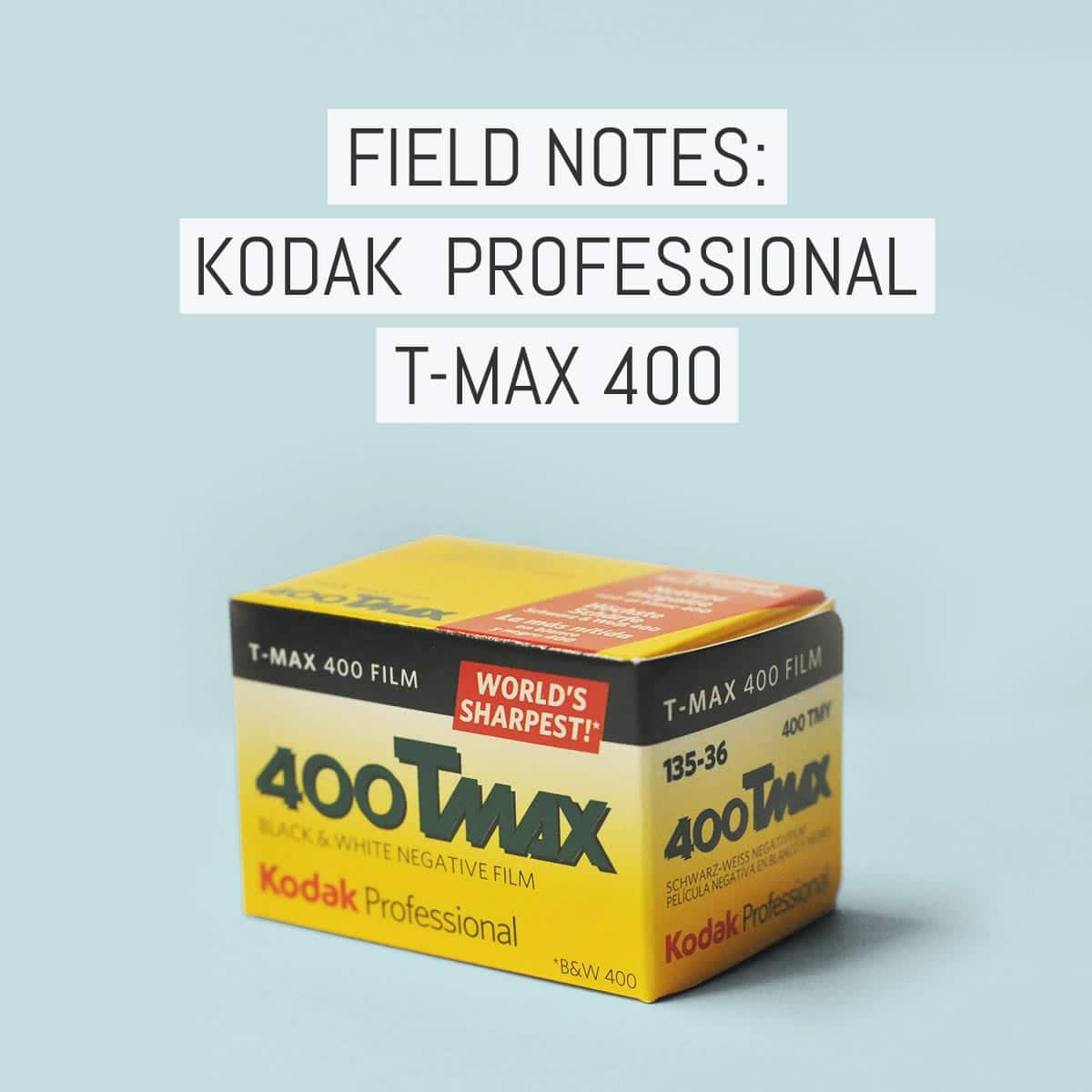Kodak T-MAX 400 is by far one of my favorite black and white films to shoot. It has a great balance of classic grain and also great latitude. Negatives are easily identified by edge markings stating “TMY-2”. I’ve used it for everything from street work to portraits to landscapes.
The ISO 400 speed is really great for me because it’s so versatile. If I’m not sure what I’ll be shooting, it’s nice to bring along the T-MAX 400 for the day. The film is available in 35mm format in both 24 and 36 exposure cartridges, which is an added convenience. Kodak T-MAX 400 is also available in 120 and sheet format.
About Kodak Professional T-MAX 400
“KODAK PROFESSIONAL T-MAX 400 Film ⁄ 400TMY is a continuous-tone panchromatic black-and-white negative film especially useful for photographing dimly lighted subjects or fast action, for extending flash distance range, and for photographing subjects that require good depth of field and fast shutter speeds with maximum image quality for the film speed.
It is also useful for scientific and biomedical work, especially when fluorescence photography is required. It has high speed (ISO 400/27° in most developers), very high sharpness, very fine grain, and very high resolving power; it allows a high degree of enlargement.”
Film specifications
| Name | Kodak Professional T-MAX 400 |  |
| Vendor | Kodak | |
| Type | Black and white (negative) | |
| Native ISO | 400 | |
| Format(s) | 35mm, 120, Sheet | |
| 35mm DX Coded | Yes | |
| Spectral sensitivity | Panchromatic | |
| Normal Process | BW | |
| Cross process | BW reversal | |
| Push process | ||
| Exposure latitude | ||
| Verified Manufacturer | Kodak |
In use
I have found that using Kodak T-MAX 400 for architecture can provide very pleasing results. In addition to shooting it for portrait work, I love the film for architecture and general street shooting. Its speed is a big reason why a lot of options are open to the photographer loaded with it. ISO 400 is a very versatile speed, and I liked being able to shoot it on rainy days in Portland to sunnier days around the Great Lakes.
I’ve found that its style can be very pleasing under good lighting to keep a certain smoothness to the images. However, that’s not to say that there can’t be that lovely classic character of grit when pushed. In the provided images, you can see an example of the noise you can achieve with the Tmax. The texture of the film can be very pleasing when shooting, and offers a lot of options to the artist.

Field Notes – Kodak T-MAX 400 (TMY-2), 35mm 
Field Notes – Kodak T-MAX 400 (TMY-2), 35mm 
Field Notes – Kodak T-MAX 400 (TMY-2), 35mm 
Field Notes – Kodak T-MAX 400 (TMY-2), 35mm 
Field Notes – Kodak T-MAX 400 (TMY-2), 35mm 
Field Notes – Kodak T-MAX 400 (TMY-2), 35mm
Blue Moon Camera and Machine provided me with these development notes for Kodak T-MAX 400:
“We develop most BW film in Kodak XTOL 1:1 dilution. Kodak T-MAX 400 is processed at 68 degrees for 9 minutes. We are using a rotary drum machine for much of our standard BW process, specifically a Phototherm Sidekick machine.”
In summary, the thing that I love most about Kodak T-MAX 400 is versatility. I was pleasantly surprised by the film’s resolution, and its ability to appear so smooth for certain shots, but also very gritty for more dramatic shots that I captured. If you’re not sure what you will be shooting on a trip, I would highly recommend considering Kodak T-MAX 400.
~ Michael
Notes:
The cover image was adapted for this article with the permission of film-folk.com.
Share your knowledge, story or project
The transfer of knowledge across the film photography community is the heart of EMULSIVE. You can add your support by contributing your thoughts, work, experiences and ideas to inspire the hundreds of thousands of people who read these pages each month. Check out the submission guide here.
If you like what you’re reading you can also help this passion project by heading over to the EMULSIVE Patreon page and contributing as little as a dollar a month. There’s also print and apparel over at Society 6, currently showcasing over two dozen t-shirt designs and over a dozen unique photographs available for purchase.








5 responses to “Film notes: Kodak Professional T-MAX 400”
TMY-2 is my all around, universal, one size fits all BW film. It sounds like you aren’t aware, but Kodak made some big changes to TMY in 2008. It’s capable of resolution, 200lpi, that can be reached only by things like Panatomic X and TMX 100. Probably better than your lens.
The RMS granularity is 10, same as Plus-X. Tri-X is 17. T-Max 100 has not evolved, it doesn’t have the same sharpness and is only two points better on the granularity scale, 8. Not worth two stops, nothing to see here, keep on moving. TMZ @ 3200 is only one step higher than Tri-X.
Yes, T-Max films take a bit of finessing and extra precaution in processing. But for a bit of effort, pure gold.
BTW, I’ll suggest that it does not have “classic grain.” Whatever that might mean, no less.
t-Max has been out for a very long time. I made my tests years ago and it is my standard B&W film. t-Max developer is what I use. Keeping it simple.